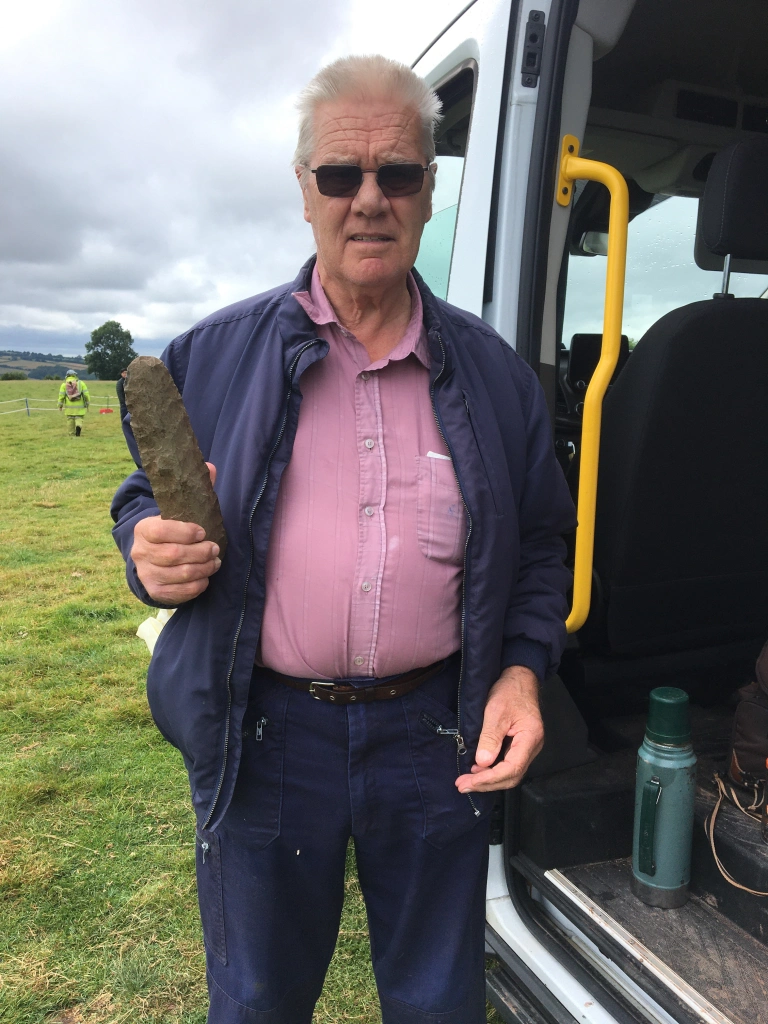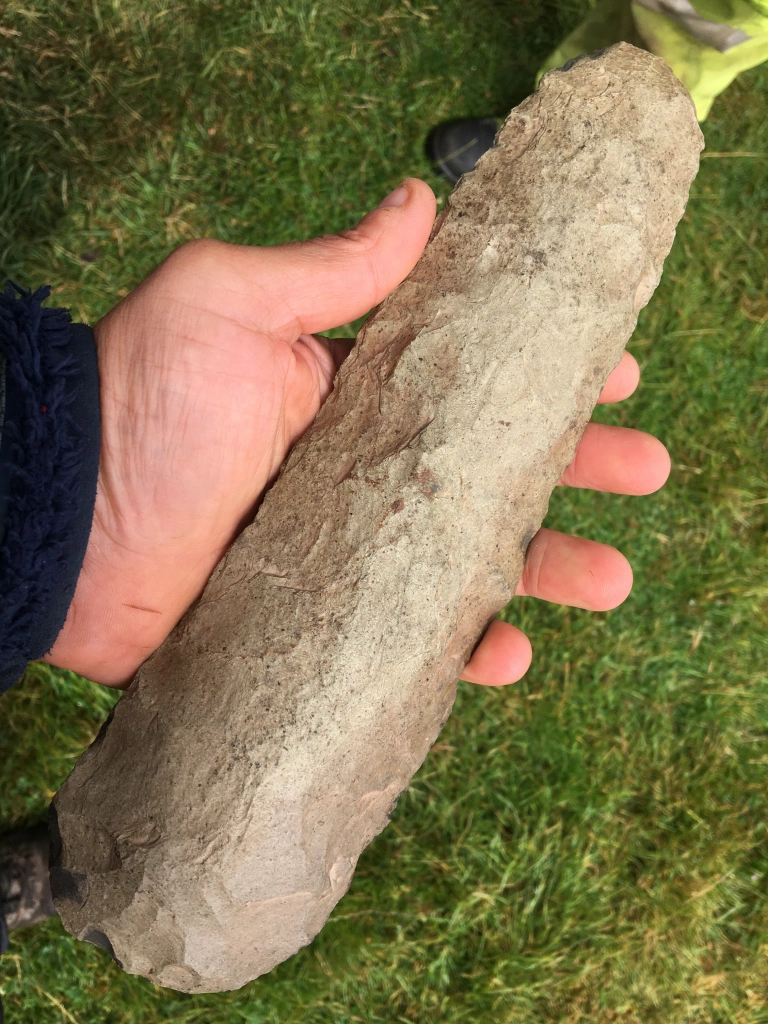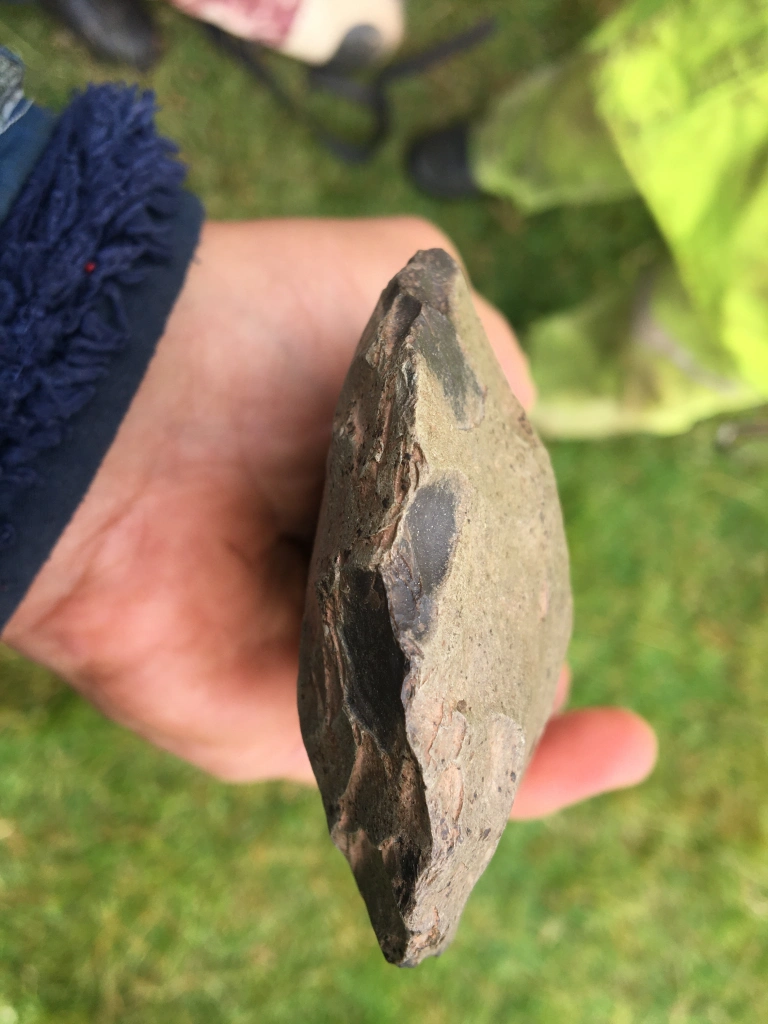I have been away for the whole of July on fieldwork in Herefordshire, and one element was the excavation of a scheduled ancient monument, Arthur’s Stone. Associated with this was an outreach project designed to engage locals with the excavation. Enter Martin Lewis.

Martin used to farm in the local area and when he heard we were up at Arthur’s Stone he brought this massive Neolithic axe up to show us. It was found by him in 1984 during a potato harvest, and only three fields away from where we were currently working.

Its main attribute was size, being flaked and patinated but not really polished. However, in areas with what looked like recent chips the material looked familiar, and it wasn’t flint. It reminded me of the material from the ‘axe factory’ that I visited in the Llyn Peninsula earlier this year.

Indeed, Martin brought up a report about the find which stated that the material was from South Wales, and it also suggested that what I read as recent chips were in fact original flake removals. I am not sure why they would say that as it makes no sense to me. I would say it was produced, it patinated, and more recent accidental chipping, perhaps by the potato harvesting machine has revealed the original material. That is my reading and it would be interesting to know why the authors thought differently however they presented no further explanation.

What is interesting to me though is that although I couldn’t tell you the kind of stone it was made from, I could tell straight away the approximate geographical area that the stone had come from. I think this aspect may well have been another important attribute of this object during the Neolithic.